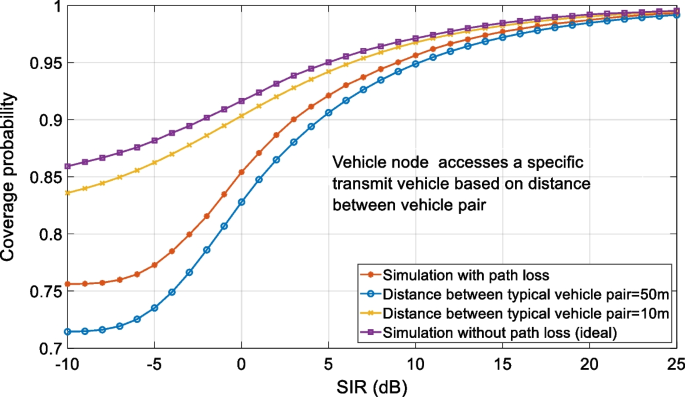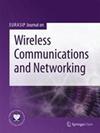Switching mode allocation in planning paths for vehicular network communication
IF 1.9
4区 计算机科学
Q2 ENGINEERING, ELECTRICAL & ELECTRONIC
EURASIP Journal on Wireless Communications and Networking
Pub Date : 2023-10-02
DOI:10.1186/s13638-023-02312-w
引用次数: 0
Abstract
Abstract Because of the increased mobility of vehicle users, it might be difficult to keep communication services in vehicle networks effective and dependable. Huge hurdles have been presented to vehicular networks as a result of the meteoric rise in the amount of data, which comes with the needs of high dependability and low latency. The deployment of access point servers at geographic locations that are closer to the vehicles in order to provide real-time service to applications that are based on the vehicles is one possible option. However, there is a limited amount of cache store space, and there is also a lack of a tractable access mode allocation method. As a result of these factors, it is very difficult to strike a compromise between the network transmission performance and fronthaul savings. Because the signal-to-interference-ratio (SIR) can be enhanced with switching mode in vehicular infrastructure, it may be possible to achieve higher levels of dependability. To serve all of the vehicles, the conventional allocation in vehicular network may not be sufficient on its own for two reasons: (1) the number of vehicles exceeds the number of paths, and (2) a vehicle may be located outside of the coverage path. Therefore, the implementation of switching mode allocation in vehicular communication is very necessary in order to increase the number of vehicles that can be supplied. In this paper, allocation using V2I, V2V, and V2X modes have been analyzed to provide dependable coverage for vehicles. These methods are used for communicating with other vehicles. In this paper, the numerical analysis has been performed such that SIR is optimized. In switching mode allocation, it has been shown that establishing a variable SIR threshold is helpful in achieving a path coverage that can be relied upon. It has been shown beyond a reasonable doubt that the coverage probability is likewise directly dependent on SIR thresholds. The theoretical analysis is verified, and it is confirmed that the suggested method is capable of achieving significant performance improvement in terms of coverage probability and data rate.

车联网通信规划路径中的交换模式分配
摘要随着车辆用户移动性的增加,车辆网络中通信服务的有效性和可靠性难以保证。由于数据量的迅速增长,伴随着高可靠性和低延迟的需求,车载网络面临着巨大的障碍。在离车辆更近的地理位置部署接入点服务器,以便为基于车辆的应用程序提供实时服务是一种可能的选择。但是,缓存存储空间有限,而且还缺乏可处理的访问模式分配方法。由于这些因素,很难在网络传输性能和前传节省之间达成妥协。由于信号干扰比(SIR)可以通过车辆基础设施的切换模式得到增强,因此有可能实现更高水平的可靠性。为了满足所有车辆的需求,车辆网络中传统的分配方式本身可能不够,原因有二:(1)车辆数量超过路径数量,(2)车辆可能位于覆盖路径之外。因此,为了增加可提供的车辆数量,在车辆通信中实现切换模式分配是非常必要的。本文分析了V2I, V2V和V2X模式的分配,为车辆提供可靠的覆盖。这些方法用于与其他车辆通信。本文进行了数值分析,对SIR进行了优化。在交换模式分配中,已经证明建立可变SIR阈值有助于实现可依赖的路径覆盖。毫无疑问,覆盖概率同样直接依赖于SIR阈值。对理论分析进行了验证,证实了所提出的方法在覆盖概率和数据速率方面能够取得显著的性能提升。
本文章由计算机程序翻译,如有差异,请以英文原文为准。
求助全文
约1分钟内获得全文
求助全文
来源期刊
CiteScore
7.70
自引率
3.80%
发文量
109
审稿时长
8.0 months
期刊介绍:
The overall aim of the EURASIP Journal on Wireless Communications and Networking (EURASIP JWCN) is to bring together science and applications of wireless communications and networking technologies with emphasis on signal processing techniques and tools. It is directed at both practicing engineers and academic researchers. EURASIP Journal on Wireless Communications and Networking will highlight the continued growth and new challenges in wireless technology, for both application development and basic research. Articles should emphasize original results relating to the theory and/or applications of wireless communications and networking. Review articles, especially those emphasizing multidisciplinary views of communications and networking, are also welcome. EURASIP Journal on Wireless Communications and Networking employs a paperless, electronic submission and evaluation system to promote a rapid turnaround in the peer-review process.
The journal is an Open Access journal since 2004.

 求助内容:
求助内容: 应助结果提醒方式:
应助结果提醒方式:


